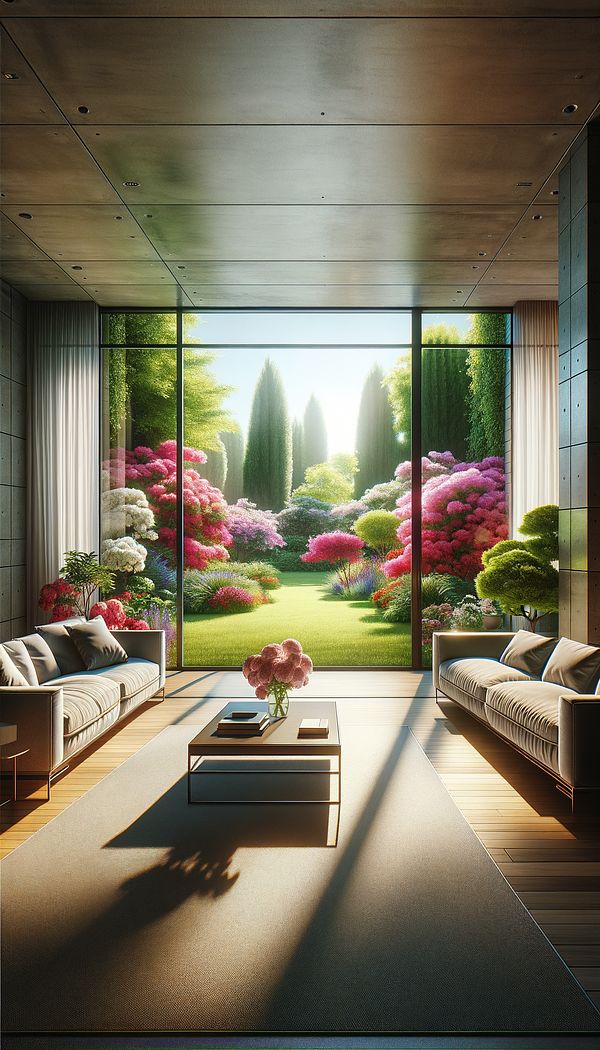What is a Vista?
A planned view or outlook, especially one framed or enhanced by architectural or landscape features.
Description
In interior design, a vista refers to a carefully composed view that is seen from a particular point within a space. This concept emphasizes the strategic arrangement and framing of views, whether they are internal, looking from one room to another, or external, focusing on landscapes or urban environments outside. Vistas are often designed to create a focal point, capture natural light, or highlight architectural or decorative elements, thereby enhancing the aesthetic appeal and atmosphere of a space.
Creating a successful vista involves considering the layout and flow of space, the placement of windows, doors, and other architectural elements, as well as the use of color, texture, and lighting. It's about guiding the observer's eye towards a specific scene or feature, creating a sense of depth and interest. For interior designers, crafting a vista is an opportunity to tell a story and evoke emotions, making the space not only visually appealing but also engaging and memorable for those who experience it.
Usage
Vistas are used in various settings, from residential homes where a living room might be designed to frame a picturesque view of the garden, to public buildings where hallways or lobbies are arranged to showcase art or architectural features. In landscape design, the concept of vista is applied to create visually appealing pathways or to frame natural or man-made features within a garden or park.
FAQs
-
How does a vista differ from a simple view?
A vista is not just any view; it's a view that has been intentionally designed or framed to enhance the beauty, interest, or experience of a space. It involves thoughtful consideration of architecture, landscape, and interior design elements.
-
Can vistas be created in small spaces?
Absolutely! Even in small spaces, strategic placement of mirrors, windows, or decorative elements can create the illusion of depth and open up beautiful vistas. The key is in the thoughtful arrangement and consideration of sightlines.
-
How important is lighting in creating a vista?
Lighting plays a crucial role in creating a vista. It can highlight certain features, create mood, and even alter the perception of space and depth. Both natural and artificial lighting should be carefully considered when designing a vista.
Practical Application
When aiming to create a vista in your space, start by identifying potential focal points, whether they're inside or outside your window. Consider the flow of space and how you can arrange furniture, use architectural elements, or incorporate decorative techniques to guide the eye. Lighting, color, and texture can also be powerful tools in enhancing the vista, making it more vivid and engaging.
-
Architectural Elements199 articles
-
Design Styles478 articles
-
Lighting111 articles
-
Decorative Techniques322 articles
-
Window Treatments65 articles
-
Spiral LegA spiral leg is a furniture leg characterized by its twisted or helical shape.
-
Venetian BlindA Venetian blind is a type of window covering made of horizontal slats that can be adjusted to control light and visibility.
-
CarpetCarpet is a floor covering made from thick woven fabric.
-
Mortise & TenonMortise & Tenon is a type of joinery that involves fitting a projection (tenon) into a corresponding cavity (mortise) to create a stable, interlocking connection.
-
VoileVoile is a lightweight, sheer fabric, often used in soft furnishing and garments.
